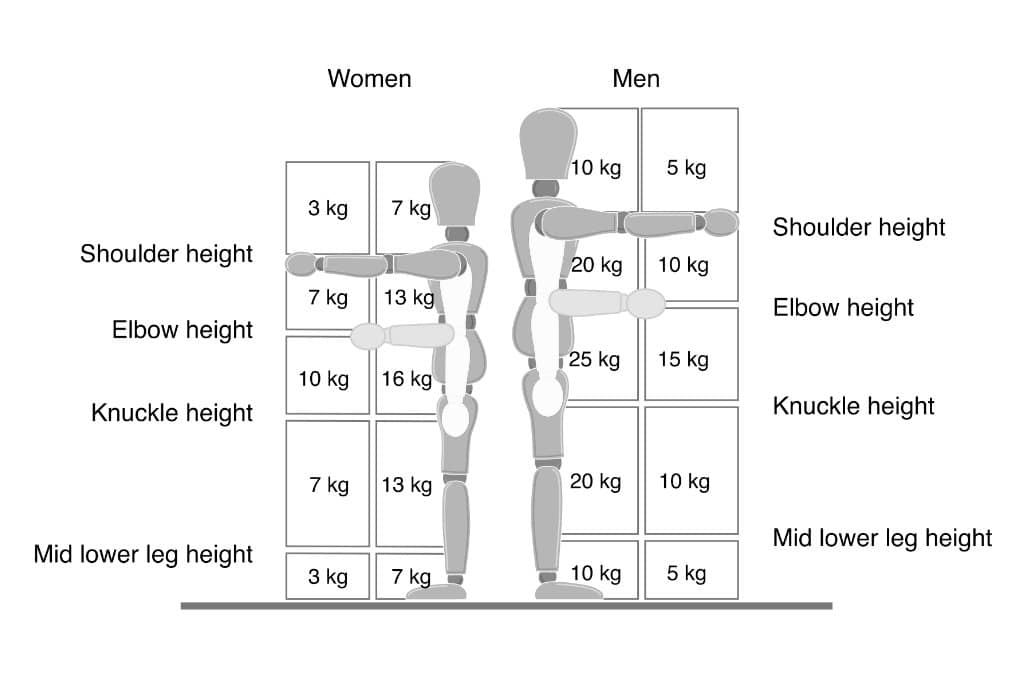News & Info
Injured in a manual handling incident? Here’s what you need to know
All employers have a duty of care to their employees to ensure they are working in a safe environment and to minimise the risk of injury.
Although they are often preventable, manual handling incidents are consistently one of the leading causes of workplace injuries in Ireland, according to Health and Safety Authority (HSA) statistics.
Back injuries were the most common injury in the 5 year period from 2018 – 2023, reported in 26% of accidents at work. The HSA research also shows that jobs in manufacturing industry typically experienced the highest number of manual handling incidents, followed by human health and social work activities.
Duty of care
All employers have a duty of care to their employees to ensure they are working in a safe environment and to minimise the risk of injury.
This means they must provide the necessary training, and equipment (if it is needed, and where practical) to any staff who are required to lift as part of their job.
Where possible, employers should provide mechanical aids, such as trolleys or hoists, to help employees handle heavy loads safely.
They must also conduct proper risk assessments and have safe systems of work for manual handling tasks. They must have clear guidelines on how to perform tasks safely and ensure employees are not lifting beyond the safe limits or lifting in an unsafe manner.
Employees also have a responsibility to follow the manual handling training and guidelines provided by their employer. They should use safe manual handling practices, including proper lifting techniques and use any mechanical aids provided when necessary.
Employees must report any hazards or concerns around manual handling safety to their employer so any risks can be addressed and accidents prevented.
Guidelines for lifting
There is no set weight limit for lifting because the risk factors for every lift will vary for each individual and circumstance. For example, how the load is lifted, from what height, who is lifting it, how often it is lifted etc.
The chart below shows the guideline weights for a healthy adult male and female, in ideal working conditions, to lift items from different heights and positions of the body:
These guideline weights are also reduced if the item is lifted more frequently:
- by 30% if repeated once or twice per minute.
- by 50% if repeated five to eight times per minute.
- by 80% if repeated more than twelve times per minute.
Risk factors also need to be considered such as if the area where the manual handling is happening is cramped or restricted, or if the person would have to twist their body to complete the lift.
Unsafe manual handling such as twisting, repetitive bending, or lifting in cramped conditions could lead to an injury and should be avoided.
What is a manual handling injury claim?
If you have been injured at work from a manual handling incident, you may be able to make a claim for compensation for your injuries, especially if you were:
- required to lift, move or carry objects in an unsafe manner,
- not properly trained how to lift safely, or
- not given the appropriate equipment required for lifting.
A specialised personal injury solicitor will be able to discuss the circumstances of your injury with you and advise on whether you are able to make a claim.
They can then guide you through the legal process so you can focus on your recovery.
Remember, there is a time limit of two years minus one day on making a personal injury claim in Ireland, called the statute of limitations. It takes time to prepare your case, so it is best to act sooner rather than later to give your claim the best chance of success.
To find out more, contact us and tell us about your case today.
Disclaimer: This article has been prepared by Tracey Solicitors LLP for general guidance only and should not be regarded as a substitute for professional advice.

